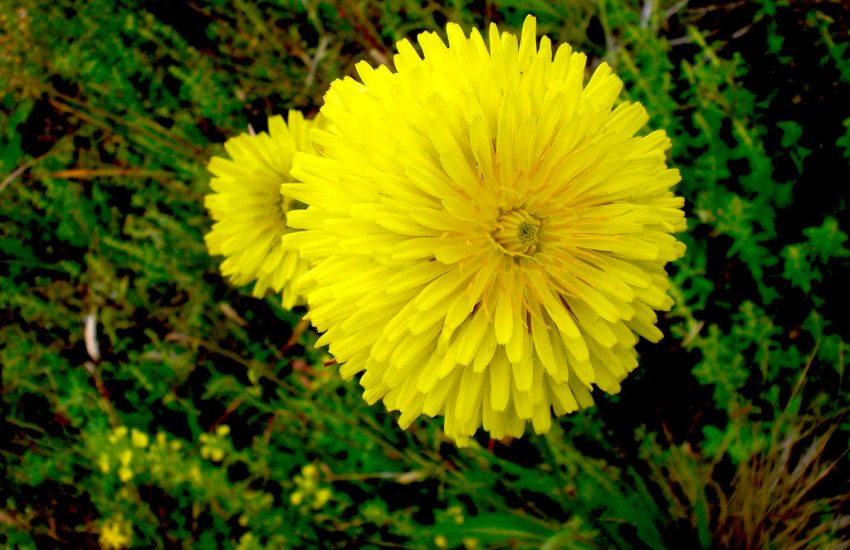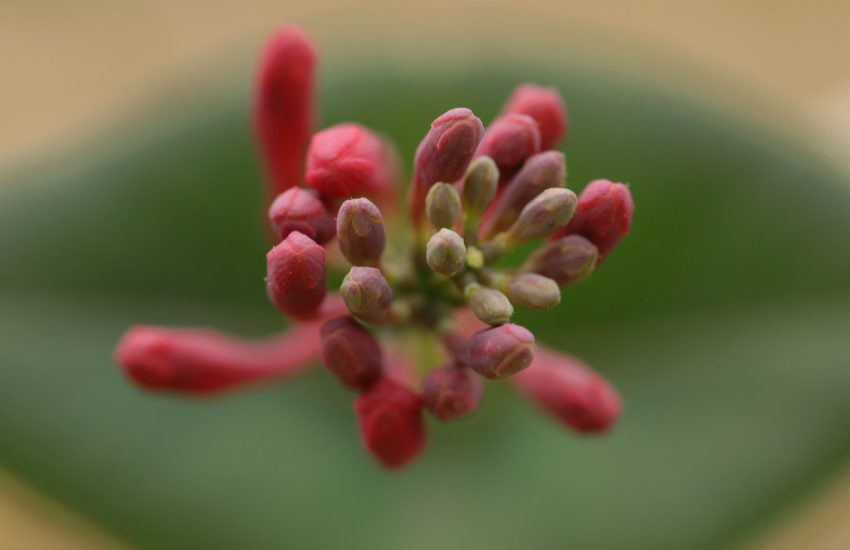Snow in Summer Plant: Characteristics and Growing Tips
Snow in summer plant, also known as Cerastium tomentosum, is a popular ground cover that is prized for its delicate, white flowers and silvery foliage. As its name suggests, this plant is able to withstand cold temperatures and even snow, making it a great addition to any garden or landscape. In this article, we will explore the many benefits of snow in summer plant, as well as provide tips for growing and caring for this unique and beautiful plant.

Snow in summer plant is a low-growing, spreading perennial that is native to Europe and Asia. It is commonly used as a ground cover in rock gardens, borders, and other areas where low-growing plants are desired. The plant is characterized by its small, white flowers that bloom in late spring and early summer, as well as its silvery, woolly foliage that provides a striking contrast to other plants in the garden. Despite its delicate appearance, snow in summer plant is a hardy plant that is able to withstand a wide range of temperatures and growing conditions.
Botanical Profile

Taxonomy
Snow in summer plant, also known as Cerastium tomentosum, belongs to the family Caryophyllaceae. It is a perennial herbaceous plant that is native to Europe, but has been introduced to other parts of the world as an ornamental ground cover.
Characteristics
Snow in summer plant is a low-growing, mat-forming plant that typically reaches a height of 10-15 cm. The leaves are small, narrow, and silver-gray in color, giving the plant its common name “silver carpet”. The flowers are white and star-shaped, and bloom in late spring to early summer.
Snow in summer plant is a hardy plant that can tolerate a wide range of soil types and conditions. It prefers full sun to partial shade and well-drained soil. It is also drought tolerant once established.
The plant is often used as a ground cover in rock gardens, borders, and other landscaping applications. It is easy to grow and maintain, and can be propagated by division or cuttings.
Overall, snow in summer plant is a versatile and attractive plant that can add interest and texture to any garden or landscape.
Cultivation
Planting
Snow in summer plants grow best in full sun and well-drained soil. They can be grown from seeds or cuttings. When planting seeds, sow them directly in the garden bed after the last frost. It’s important to keep the soil moist until germination occurs. When planting cuttings, make sure they are taken from healthy plants and are at least 3 inches long. Plant the cuttings in moist soil and keep them in a shaded area until they have rooted.
Watering and Care
Snow in summer plants require moderate watering. Overwatering can lead to root rot, so it’s important to ensure that the soil is well-drained. During the growing season, fertilize the plants with a balanced fertilizer once a month. Deadheading the flowers after they have bloomed can help promote more blooms.
Propagation
Snow in summer plants can be propagated by seeds or cuttings. To propagate by seeds, collect the seeds from the plant after the flowers have bloomed. Sow the seeds directly in the garden bed or in a container. To propagate by cuttings, take a cutting from a healthy plant and plant it in moist soil. Keep the cutting in a shaded area until it has rooted.
Overall, snow in summer plants are easy to grow and care for. With proper planting, watering, and care, these plants can add a beautiful touch to any garden.
Garden Design and Usage
Landscape Integration
Snow in Summer plants are a great addition to any garden design. They can be used in a variety of ways to enhance the overall look of the garden. These plants work particularly well in rock gardens, edgings, and borders. They can also be used to create a stunning ground cover on slopes.
When designing a garden with Snow in Summer plants, it is important to consider their growth habits. These plants can spread quickly and can become invasive if not properly maintained. Therefore, it is recommended to plant them in areas where they will have plenty of room to grow without taking over other plants.
Companion Planting
Snow in Summer plants make great companion plants for a variety of other species. They work particularly well with plants that have similar growing conditions and water requirements. Examples of companion plants include Lavender, Catmint, and Salvia.
When choosing companion plants, it is important to consider their growth habits and how they will complement the Snow in Summer plants. For example, plants with smaller leaves or more delicate flowers can work well with Snow in Summer plants, as they will not compete for attention.
Overall, Snow in Summer plants are a versatile and beautiful addition to any garden design. With proper planning and maintenance, they can enhance the overall look and feel of the garden while providing a stunning ground cover or accent plant.
Maintenance and Management

Pruning
Snow in summer plants require regular pruning to maintain their shape and size. Pruning should be done in the early spring before new growth begins. This will encourage the plant to produce new growth and promote a fuller, more compact shape. Dead or damaged branches should be removed as soon as they are noticed, as they can attract pests and diseases.
Controlling Spread
Snow in summer plants can be invasive if not properly managed. Regular monitoring and control measures are necessary to prevent the plant from spreading beyond its intended area. The use of a string trimmer or hand pruning can be effective in controlling the spread of the plant. It is important to avoid cutting back the plant too severely, as this can damage the plant and reduce its overall health.
Regular care and maintenance of snow in summer plants can help prevent fungal problems and pest infestations. It is important to monitor the plant for any signs of disease or pests, and to take appropriate action as soon as possible. This can include the use of fungicides or insecticides, as well as proper watering and fertilization. With proper care and management, snow in summer plants can be a beautiful addition to any garden or landscape.
Potential Challenges

Environmental Stress
Snow in summer plants are adapted to grow in dry and hot conditions. However, prolonged drought or extreme heat can cause stress to the plant and affect its growth and flowering. In such conditions, the plant may require additional watering and mulching to retain moisture in the soil.
On the other hand, excessive rainfall or overwatering can lead to root rot, which can be fatal to the plant. Hence, it is crucial to maintain a well-draining soil and avoid waterlogged conditions.
Pests and Diseases
Snow in summer plants are generally resistant to pests and diseases. However, they may be susceptible to attacks from spider mites and aphids, which can cause discoloration and distortion of the leaves. In severe cases, the plant may require treatment with an insecticide or a miticide.
Invasive plants can also pose a threat to snow in summer plants by competing for resources and space. It is recommended to remove any invasive plants from the vicinity of the plant to prevent such competition.
Additionally, deer may find snow in summer plants to be a tasty snack. Hence, it is advisable to plant them in a deer-resistant area or use deer repellents to deter them.
Overall, while snow in summer plants are relatively low maintenance, it is essential to be aware of potential challenges that may arise and take appropriate measures to ensure the health and longevity of the plant.
Frequently Asked Questions

How should Snow-in-Summer plants be spaced when planting?
When planting Snow-in-Summer plants, it is recommended to space them about 12-18 inches apart. This will allow enough room for the plants to spread and grow properly. It is also important to plant them in well-draining soil and in a location that receives full sun.
Can Snow-in-Summer plants be grown indoors effectively?
Snow-in-Summer plants are typically grown outdoors and may not thrive indoors. They require full sun and well-draining soil, which may be difficult to provide indoors. However, if you have a sunny window and can provide the proper growing conditions, it is possible to grow Snow-in-Summer plants indoors.
What is the typical height range for a mature Snow-in-Summer plant?
A mature Snow-in-Summer plant typically reaches a height of 8-12 inches and spreads about 12-18 inches wide. However, the height and spread can vary depending on the growing conditions and the specific cultivar.
Are Snow-in-Summer plants considered invasive in certain regions?
Snow-in-Summer plants are not considered invasive in most regions, but they can spread easily in some areas. It is important to check with your local extension office to determine if Snow-in-Summer plants are invasive in your region.
Is the Snow-in-Summer plant toxic to pets or humans?
Snow-in-Summer plants are not toxic to pets or humans. However, it is always a good idea to keep pets and children away from plants to prevent accidental ingestion.
Does the Snow-in-Summer plant propagate and spread easily?
Yes, Snow-in-Summer plants can propagate and spread easily. They produce seeds and can also spread through rhizomes. It is important to monitor the plants and remove any unwanted growth to prevent them from taking over the garden.


